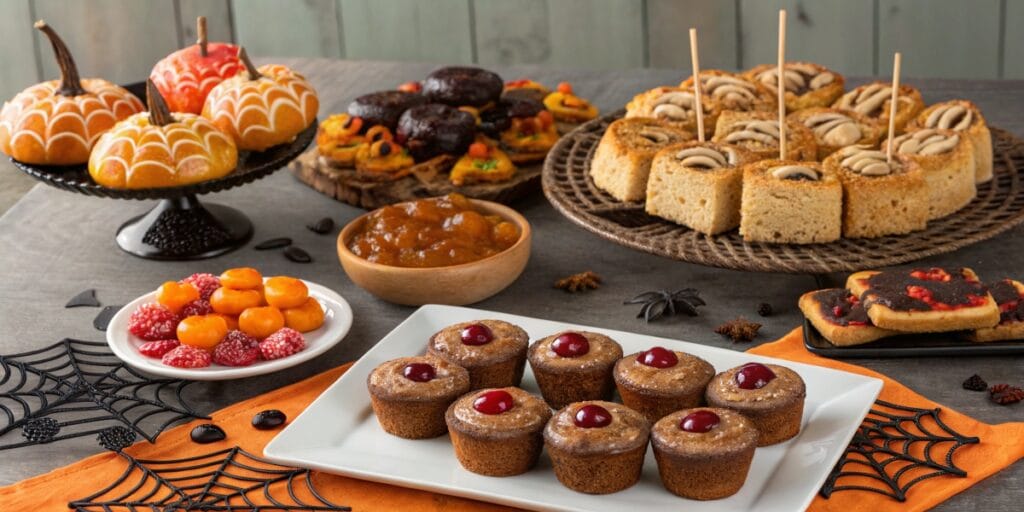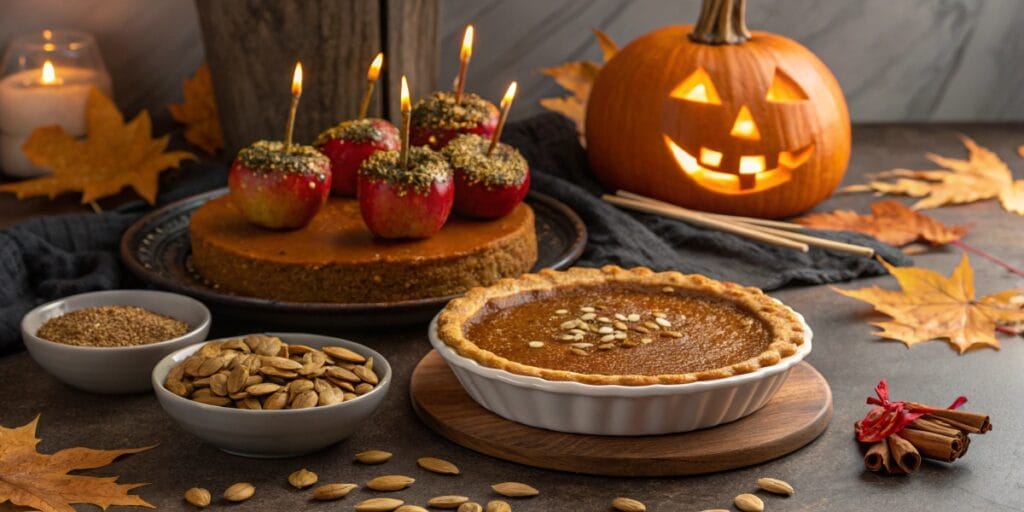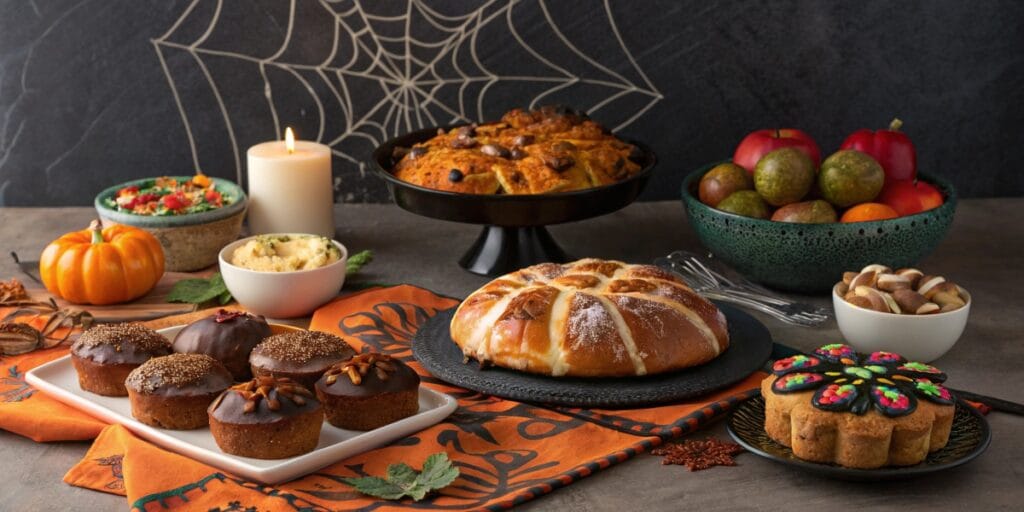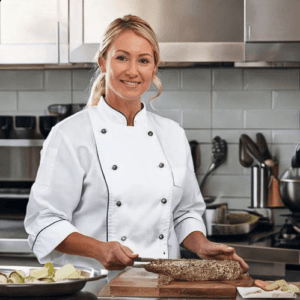What Is the Most Eaten Food on Halloween?
Halloween is a time for spooky decorations, playful costumes, and most importantly, indulging in delicious treats. Among the many traditions tied to this holiday, food plays a central role. But what food takes the crown as the most eaten on Halloween? While candy reigns supreme, it’s not the only Halloween favorite. This article explores the history, trends, and cultural significance of Halloween’s iconic foods, along with modern takes on the tradition.

Discover the full history behind these treats and their cultural evolution in our Halloween food traditions post.
The Historical Context of Halloween Foods
Halloween originated from the ancient Celtic festival of Samhain, which marked the end of the harvest season and the beginning of winter. The Celts believed this transition blurred the lines between the living and the dead, prompting rituals involving special foods to honor spirits and protect the living.
Some of the traditional foods from this time include:
- Apples: A symbol of harvest and fertility, often featured in games like bobbing for apples.
- Soul Cakes: Small pastries offered during All Souls’ Day, representing prayers for the deceased.
- Nuts and Grains: Essential staples for autumn feasts.
These traditions laid the groundwork for the modern food-centric Halloween we know today. Over time, candy replaced many of these items as Halloween became more commercialized.
For a deeper look into the history of Halloween, visit History of Halloween Traditions.
The Reign of Candy: Most Eaten Food on Halloween
How Candy Became Central to Halloween
Candy’s dominance on Halloween is a relatively modern phenomenon. In the mid-20th century, trick-or-treating became a widespread tradition in the United States. As this custom gained popularity, candy manufacturers seized the opportunity, promoting pre-packaged sweets as the perfect Halloween treat.
The Scale of Candy Consumption
Today, candy is the undisputed king of Halloween. According to Halloween Candy Consumption Statistics:
- Over 600 million pounds of candy are purchased annually for Halloween.
- Americans spend approximately $2.7 billion on candy each year.
Popular Halloween Candies
Certain candies have become iconic for Halloween, including:
- Reese’s Peanut Butter Cups: A perennial favorite for their rich chocolate and peanut butter combination.
- Snickers: Loved for their mix of chocolate, caramel, and peanuts.
- Candy Corn: A classic treat, though its taste often divides opinions.
For more ideas to make Halloween festive, check out our guide on creative party snacks.
Regional Variations for Most Eaten Food on Halloween
While candy dominates, other foods highlight the diverse ways Halloween is celebrated around the world. Different regions adapt the holiday to their unique traditions and ingredients:
- United States: Candy bars, candy corn, and caramel apples are Halloween staples.
- Ireland: Barmbrack, a fruit-filled bread, is a traditional Halloween treat, often containing small charms predicting the eater’s future.
- Mexico: Celebrated as Día de los Muertos, Halloween is paired with pan de muerto (bread of the dead), a sweet, round bread decorated with bone-like patterns.
These regional variations showcase Halloween’s adaptability to different cultures. Learn more about global food traditions in our regional food traditions post.
Traditional Halloween Foods Beyond Candy
While candy is the most eaten food on Halloween, many traditional foods continue to play a role in celebrations. These include:
1. Caramel Apples
Caramel apples are a quintessential fall treat, combining the tartness of apples with the sweetness of caramel. They are easy to make at home and can be customized with toppings like nuts or sprinkles. Learn how to make your own in our DIY caramel apple recipe.
2. Pumpkin Pie
Although more commonly associated with Thanksgiving, pumpkin pie is a popular dessert at Halloween parties. Its warm spices make it a comforting choice for cool autumn nights.
3. Roasted Pumpkin Seeds
Carving jack-o’-lanterns often leaves behind a bounty of seeds. Roasting these seeds with salt or spices creates a savory, crunchy snack.
These foods not only add variety but also connect us to Halloween’s agricultural roots, offering a balance to the sugar-heavy focus of modern celebrations.
Modern Trends and Most Eaten Food on Halloween
Halloween food consumption has evolved significantly in recent years, reflecting broader trends in health and creativity.
1. Healthier Alternatives
As concerns over childhood obesity and sugar consumption grow, parents and schools are seeking healthier options for Halloween treats. Some popular alternatives include:
- Granola Bars: A chewy, nutrient-packed option.
- Fruit-Based Snacks: Individually wrapped fruit leathers or dried fruit packets.
- Vegan and Gluten-Free Treats: Meeting the needs of children with dietary restrictions.
To discover more about healthier options, visit Healthy Halloween Treat Alternatives.
2. Creative Homemade Treats
Homemade Halloween treats allow for personalization and creativity. Popular ideas include:
- Cupcakes decorated with spider webs or ghosts.
- Cookies shaped like bats or pumpkins.
- DIY snack packs featuring a mix of sweet and savory items.
For inspiration, explore our Halloween-themed DIY recipes.
The Economic Impact of Halloween Food Consumption
The popularity of Halloween foods goes beyond taste; it significantly impacts the economy. Here’s a closer look at how this holiday drives consumer spending:
- Candy Sales: With over $2.7 billion spent annually, candy is the largest expense for Halloween foods.
- Seasonal Marketing: Brands capitalize on Halloween by creating themed packaging and products, such as pumpkin-shaped chocolates or glow-in-the-dark wrappers.
- Party Supplies: Beyond candy, consumers also invest in party snacks, baked goods, and beverages for Halloween gatherings.

This economic influence underscores Halloween’s status as a major food-centric holiday. Learn more about seasonal marketing strategies in our Halloween food marketing analysis.
Safety and Health Considerations
While Halloween is a time for indulgence, it’s essential to prioritize health and safety, especially for children. Here are some tips:
- Moderation: Encourage children to enjoy their candy in small portions to avoid sugar overload.
- Allergen Awareness: Check labels to ensure treats are safe for children with food allergies.
- Homemade Treats: If giving or receiving homemade goodies, ensure they are prepared and packaged safely.
These tips can help ensure a happy and safe Halloween for everyone. For additional guidance, explore our Halloween health guide.
Frequently Asked Questions (FAQs) about Most Eaten Food on Halloween
1. What is the most popular Halloween candy?
Reese’s Peanut Butter Cups, Snickers, and candy corn consistently rank among the top Halloween treats.
2. How much candy is consumed on Halloween?
Over 600 million pounds of candy are consumed in the United States every Halloween.
3. What are some traditional Halloween foods?
Traditional foods include caramel apples, pumpkin pie, roasted pumpkin seeds, and barmbrack.
4. How has Halloween food consumption changed over time?
Candy became central to Halloween due to the rise of trick-or-treating and its convenience compared to earlier staples like apples and nuts.
5. What are some healthy alternatives for Halloween treats?
Granola bars, fruit snacks, and gluten-free or vegan candies are great options for health-conscious celebrations.
Conclusion
Halloween’s culinary traditions are as diverse as its costumes. While candy remains the most eaten food, traditional dishes like caramel apples and pumpkin pie add depth and nostalgia to the celebrations. Modern trends, such as healthier alternatives and creative homemade treats, ensure there’s something for everyone to enjoy.

To elevate your Halloween celebrations, explore our seasonal recipes and embrace the spooky season with delicious, thoughtful foods. Whether you’re indulging in candy or crafting your own treats, Halloween is a time to celebrate the joy of food and community.
